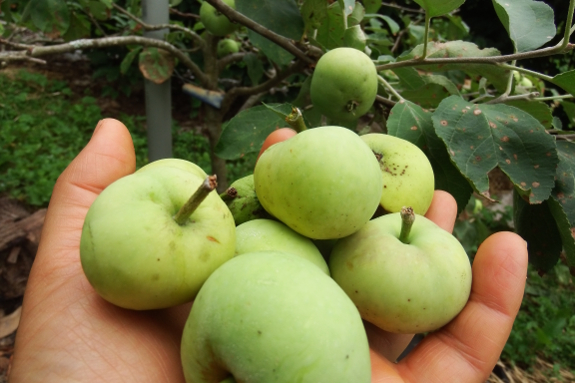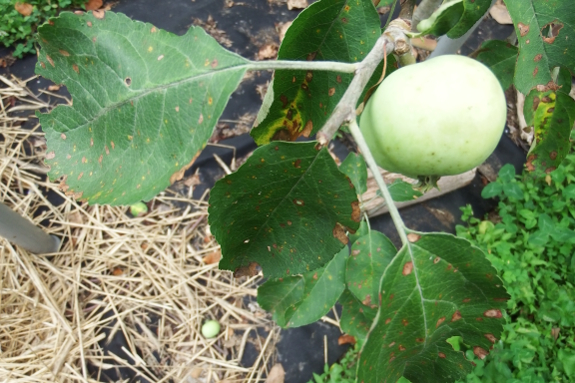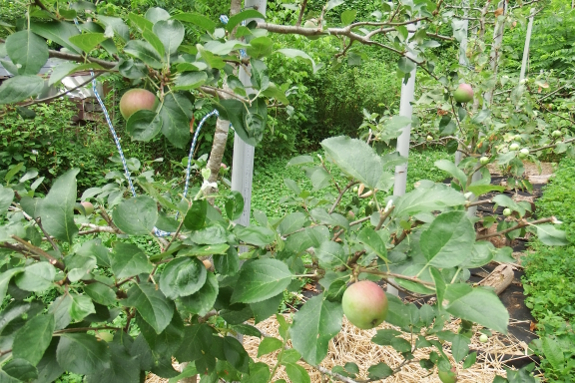
June apple drop

We've never had an apple
tree that set as many fruit in as small a space as our high-density
Early Transparent.
So I guess I shouldn't have been surprised that this is also the first
time we've experienced June drop.
What's June drop? Fruit
trees naturally
shed tiny fruitlets soon after blooming, but the trees sometimes
have a second round of self-thinning about eight weeks later as well.
This so-called June drop can be natural, or it can be due to
mismanagement. In our case, I think the cause is a little bit of both.

What did I do wrong? The
tree in question is located just out of range of our sprinklers, so
lack of water may have been a contributing factor.
Similarly, I didn't
fertilize this row at all last year because I didn't want to waste any
of my limited compost on trees whose flowers kept freezing rather than
setting fruit. Lack of nitrogen, like lack of water, can spur June drop.
Finally, I summer
pruned the tree pretty hard at the beginning of this
month, and the resultant paucity of leaves might have made the tree
feel like it couldn't handle as many fruit as it had originally chosen
to keep.

I'll mitigate some of
those practices in later years. But, for now, I'm nibbling on the June
drops, which actually taste pretty good if you're a sour-fruit lover.
Meanwhile, I'm watching the neighboring tree, which is holding onto its
fruits and swelling them up even faster than the Transparent is. So
perhaps the latter just had too many fruits to handle after all and I
shouldn't be terribly concerned about June drop.
Want more in-depth information? Browse through our books.
Or explore more posts by date or by subject.
About us: Anna Hess and Mark Hamilton spent over a decade living self-sufficiently in the mountains of Virginia before moving north to start over from scratch in the foothills of Ohio. They've experimented with permaculture, no-till gardening, trailersteading, home-based microbusinesses and much more, writing about their adventures in both blogs and books.
Want to be notified when new comments are posted on this page? Click on the RSS button after you add a comment to subscribe to the comment feed, or simply check the box beside "email replies to me" while writing your comment.
